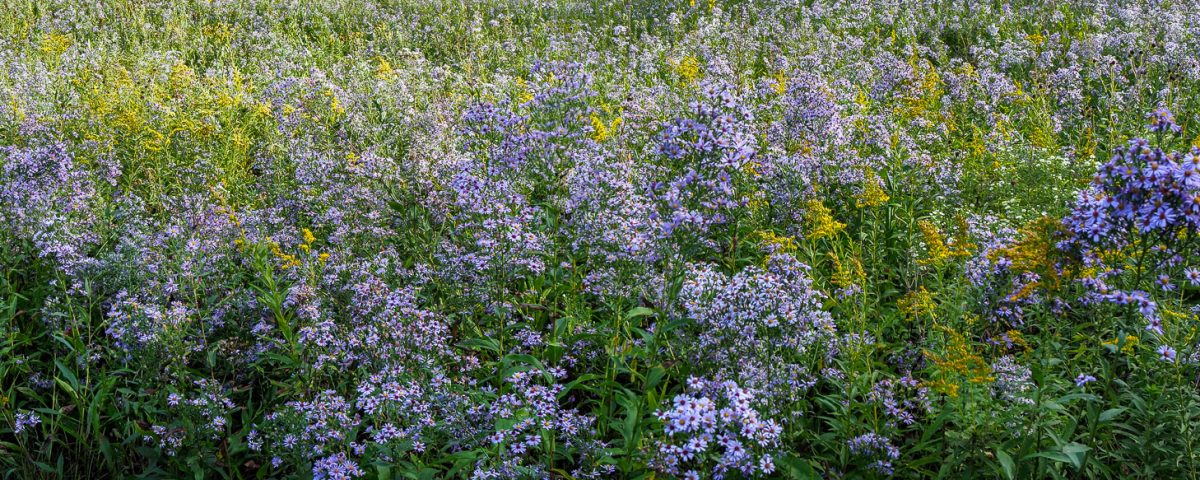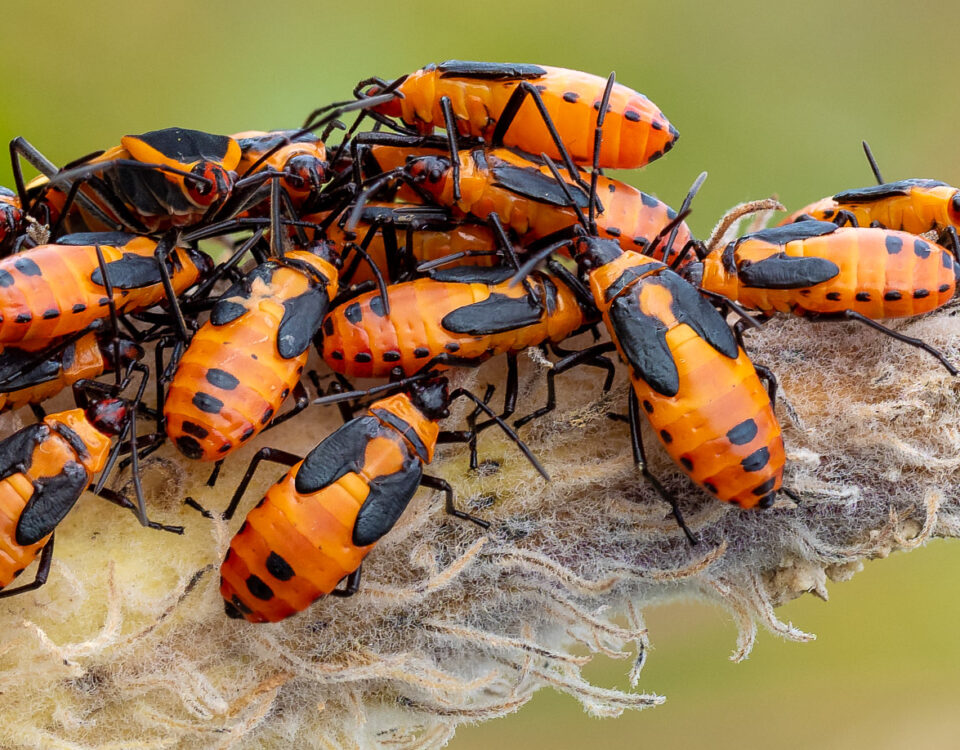Our Transformation to Native Plants

Calligrapher flower flies are great beneficial insects
June 9, 2020
The Dainty but Ferocious Damselfly
July 9, 2020We started planting natives by creating a butterfly garden while Gary was working on his horticulture degree. A modest-sized rectangular area of lawn in our side yard was transformed with native plants we found at local native plant sales. Butterflies and other pollinators became regular visitors to our yard – just like that!
When we purchased a 4 acre rural residential lot for a new home in 1999, our plans became much more grandiose. Our property was a fallow cornfield of mostly noxious weeds surrounded on 3 sides by small woodland patches and hedgerows filled with invasive shrubs. Native plants were few and far between, with low overall diversity. But the site offered potential for realizing our vision - a large sunny native meadow, rich native woodland areas, and healthy “edges” that we knew from birding are important habitat. Even before we sited the house, Gary created a Landscape Design Master Plan. Subsequently, we’ve methodically executed the plan over many years.
The primary habitat creation elements of our property are a 2+ acre meadow, extensive gardens of native plant communities, a ½+ acre of woodland, and a naturalistic pond and stream. This water feature adds much needed habitat diversity to our dry rocky upland slope.
Gary has expertise in creating native meadows and was anxious to have his own. He designed our meadow with a site specific selection of more than 60 native herbaceous species. Where most new home owners plant turf grass, we agriculturally seeded our property with Gary’s custom designed native seed mix. After several years, the meadow evolved into a stable plant community. Now we maintain it with an annual mowing to prevent reforestation and perform targeted control of invasive plants.

Before: The fallow field
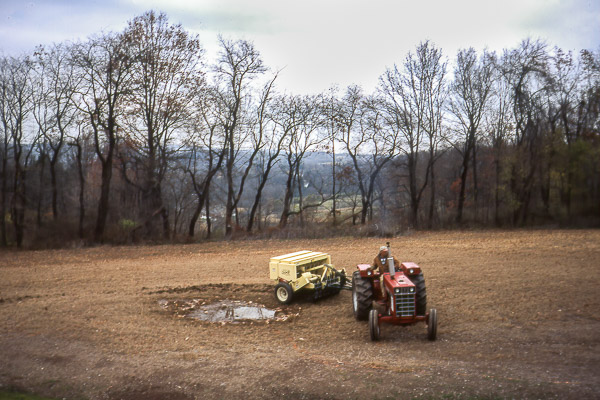
Seeding the native meadow

First year meadow growth
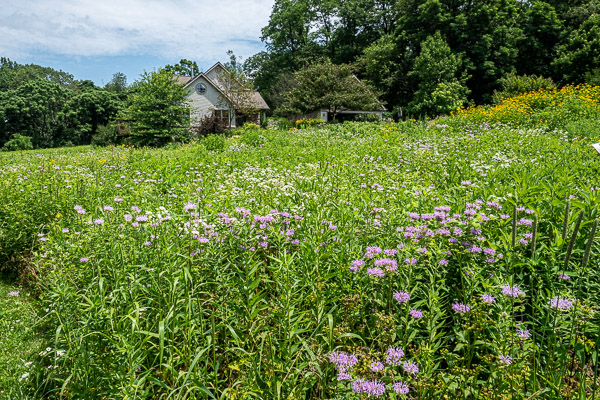
Mature meadow in early summer
Our acre of deer-protected yard includes half of our planted gardens, some of the woods, and our pond with stream. The gardens expand our plant diversity to include more community plantings (we’ll expand on this concept in the future) and collector specimens like native deciduous rhododendrons that wouldn’t survive deer browse. This is also where we carved out a spot for an outdoor living area for ourselves with patio, vegetable, and herb gardens.
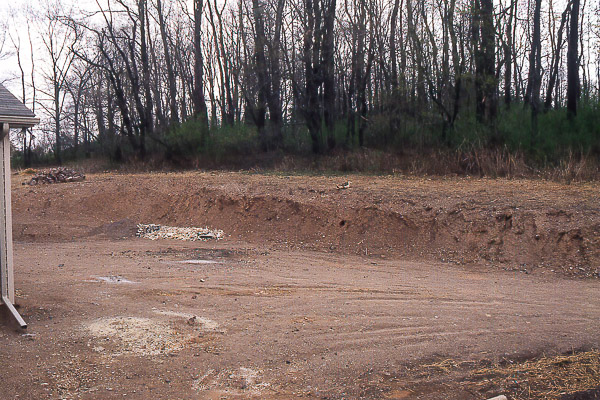
Before: Post house construction

Pond installation and planting when it was an island
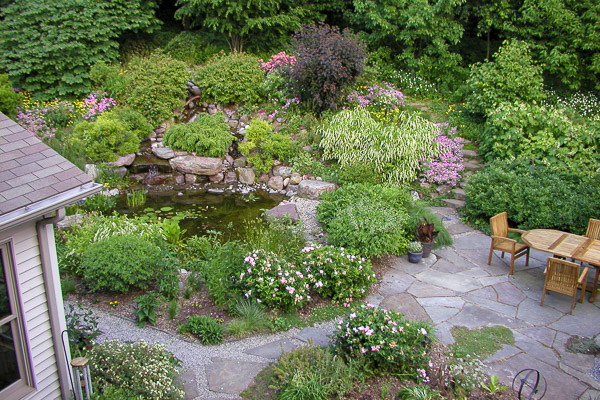
The finished patio and pond in mid-spring
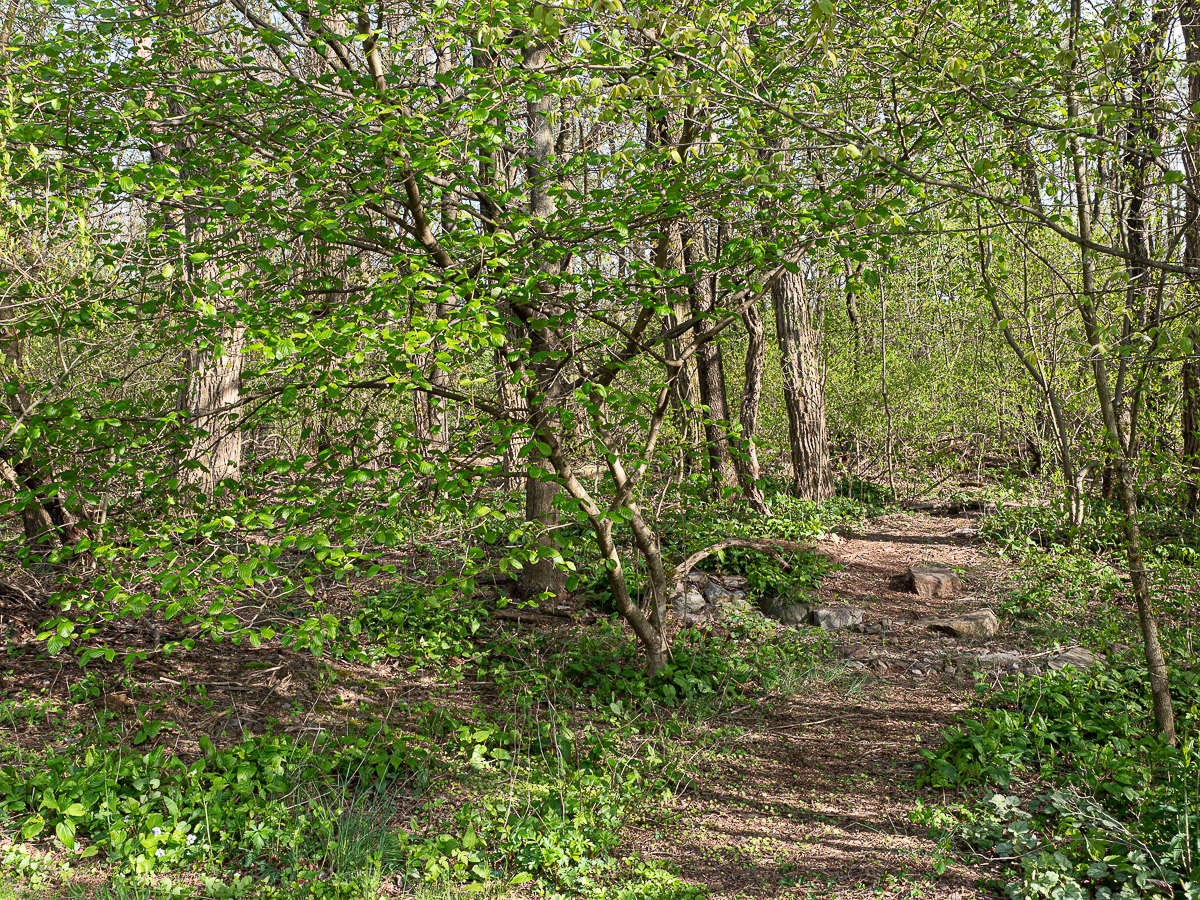
Woodland area with recovered understory and invasive shrubs removed
The transition of our woodlands has been the slowest process and continues today. With the meadow and gardens we started from essentially bare soil. However, with the woods, our approach is using “elimination” and selective editing techniques. Invasive honeysuckle, multi-flora rose, and privet are predominant understory in our area. Gary has slowly and meticulously been eliminating these shrubs. Once removed, we encourage native seedlings to re-populate the understory. Inside the deer fencing, an herbaceous understory is reappearing and slowly recovering as well. Our understory has come alive with a diversity of native woodland “wildflowers” and we’re discovering new mushrooms as well.
Our woodland tree species are in transition as well. We cut back new clones and seedlings of the abundant black locust and encourage oak, maple, and other native saplings. Unfortunately, new disease and pests are wiping out our dominant ash trees so our woodlands are experiencing an additional undesired transition.

Morel mushroom coloring in decay
The vast majority of species we have planted are native - some very common, some rarer. Even our pond is planted with native plants! That doesn’t mean we don’t have plenty of volunteers that are introduced “weeds”. Some plant species are hosts for unique wildlife while other plant species are generalists. What we have come to realize, through our careful observations and photographic record keeping, is that the diverse native plant dominated habitats that we’ve created are magnets for attracting wildlife of all sorts.
One truism for our yard is that it’s constantly changing – seasonally, annually, and successionally. Plants emerge, grow, bloom, seed, go dormant, and even die - each on its own schedule. Shape, color, height, and vigor vary from year to year. People driving past our property probably presume we just don’t mow our field. In reality, we work hard to be good stewards of our land.


Pine Sisken join flocks of American Goldfinch to feed on seed
Then there is the wildlife – from microscopic insects to deer. Some of the wildlife calls our property home, some are migrants, and others are occasional visitors. We never know what is going to show up (but we do have regulars!). We started hoping to attract birds and pollinators. Success!!! Now we are also “discovering” a diversity of arthropods - insects and spiders - we didn't know existed. And, as it turns out, many are little known to scientists too.
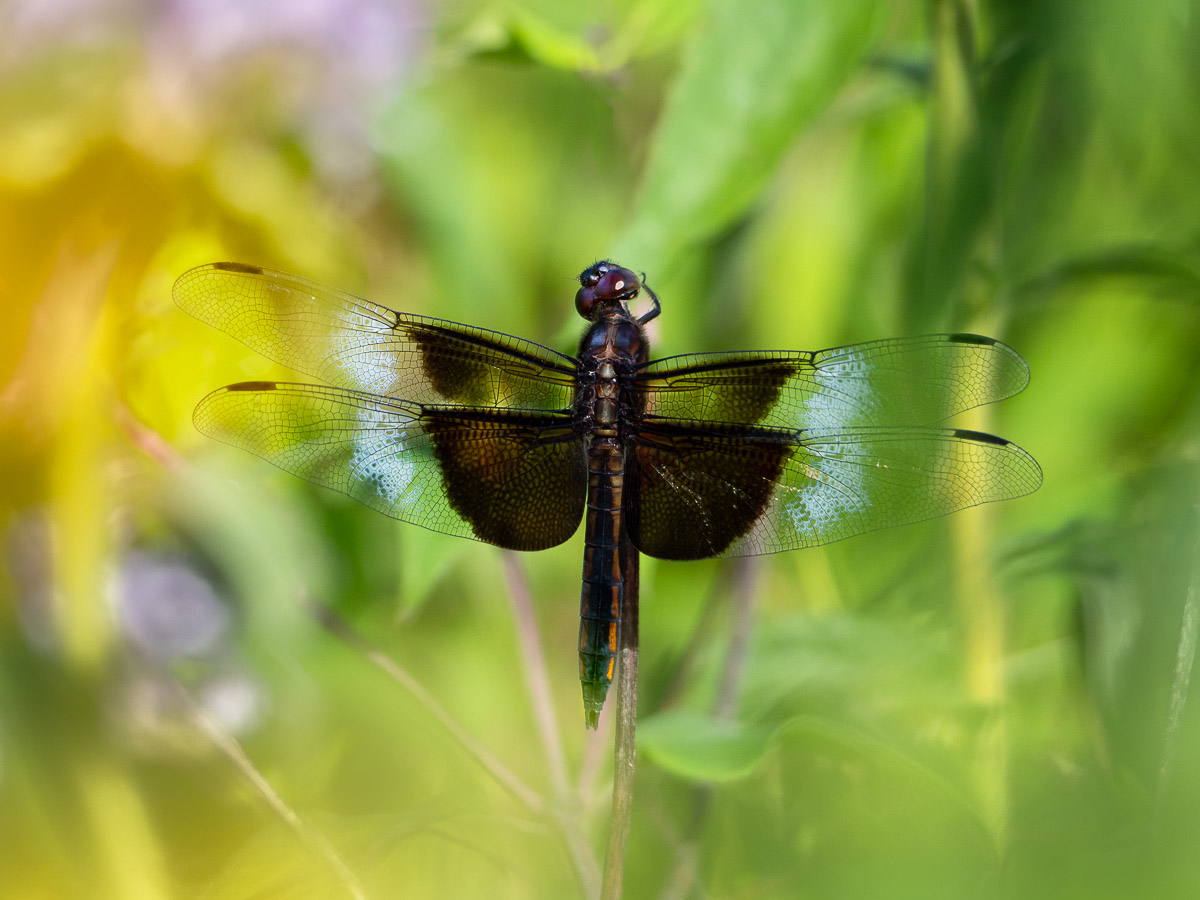
Dragonflies use the meadow paths to hunt and sun

